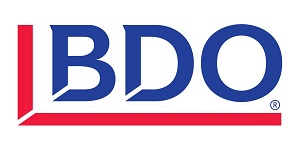 Special to the Philanthropy Journal
Special to the Philanthropy Journal
By Andrea Wilson
Part 1 of a 2 part series.
For nonprofits looking to stand out in an increasingly crowded giving landscape, experimenting with new giving models and integrating new technology into your current campaigns could help you stand out from the crowd.
If the bulk of your fundraising budget is still directed toward age-old direct mailing campaigns, consider diversifying and exploring a few of the following emerging trends.
What influences someone to donate to an organization? While many Americans make regular contributions to priority causes, successfully converting new donors takes a combination of two elements: (1) A compelling case for why your organizations’ work matters, and (2) a clearly articulated value proposition, or the impact of their individual donation.
But a poignant campaign is only half the battle. If your organization relies solely on wire transfers or other slow processes to accept donations, you’re unlikely to see money pouring in. Nonprofits that limit the barriers to giving and update their donation channels to keep pace with consumer behavior are less likely to lose prospective donors midstream. Increasingly, that means optimizing online and mobile giving platforms. According to Nonprofit Source, nearly half of millennials (47 percent) gave through an organizations’ website in 2016. To facilitate painless giving, an omnichannel approach—so donors can give via their preferred means—is often the best solution.
Get your nonprofit front-and-center when it matters most.
A new fundraising tool, Action Button, goes a step further to align with consumer behavior. The interactive technology pairs news stories directly with causes to help nonprofits reach potential donors when they are engaged in an everyday activity—reading the news—at a moment they might be organically inspired to give. A breaking news story on a hurricane’s landfall, for example, could have ‘action buttons’ integrated directly in the article itself that allow readers to donate to a natural disaster relief organization or take a quiz to test their knowledge on the impact of that nonprofit’s humanitarian work.
Tap into your analytics.
Understanding the analytics behind fundraising could be an important differentiator for organizations. A good place to get started is digging into your own data. Are your campaigns driving more giving from women? Baby Boomers? High-net-worth (HNW) philanthropists? Familiarizing yourself with your core contributors can be valuable to identify who your current campaigns resonate with, and perhaps even more valuable, help you determine whether you’re overlooking a potential donor pool.
One step further than analyzing internal data, nonprofits should also explore leveraging publicly available data—posted to Facebook, LinkedIn, Twitter and other social media platforms—to more intentionally target potential donors with specific characteristics. This can be as broad as targeting donors of a certain age or educational background, or as specific as targeting individuals that “liked” or demonstrated support for similar causes or organizations on their personal platforms.
Successful organizations also use social media data to understand what’s going on with real people and forge connections. For example, a cure-based organization might send targeted messages to people that celebrate anniversaries of being cancer-free on social media. When deciding where to make charitable contributions, people often give money to organizations and causes that have personally impacted them or their loved ones.
As you consider how to integrate technology into your nonprofit’s fundraising activities, ask yourself:
- Who are your target donors?
- Are you overlooking a potential donor pool like Millennials?
- Have you considered broadening your target demographic?
- Do your giving platforms align with your donors’ behaviors and allow for seamless integration into their routines?
- Are you leveraging publicly available data to forge or strengthen connections with people close to your cause?
For more information, contact Andrea Wilson, leader of BDO’s Nonprofit and Education Advisory practice.





